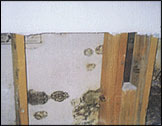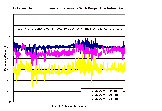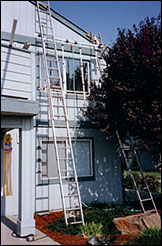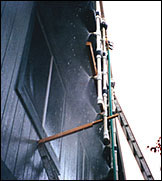Moisture Assessment and Control
Bacteria and Endotoxin
Mold
IEE's approach to mold investigations, data analyses and preparation of detailed mitigation plans uses elements adopted from governmental / professional organizations such as EPA, ACGIH and AIHA. Our typical mold projects include one or more of the following steps:Assessment
Visual / olfactory assessmentSurface samples of visual mold growth
Air sampling to assess exposure and content cleaning requirements
Destructive testing to determine extent of mold growth concealed in building cavities
Mitigation
Primary and secondary engineering controlsMechanical removal of mold growth (zero or minimal use of biocides)
Cleaning of particulates from indoor air and surfaces
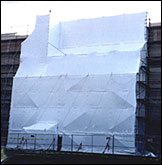 |
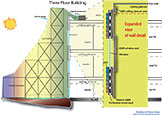 |
|
A shrink wrap containment, on the exterior of a three story hospital, that was used during removal of mold contaminated building materials. |
CLICK FOR LARGER IMAGE. Illustration depicting a typical exterior containment setup for the project. During mitigation activities we measured the pressure in the exterior containment with respect to the building air using a multi-port micro-manometer together with data collection software. |
Clearance
Visual inspection
Air sampling
NOTE: The underlying moisture problem(s) must be correctly identified and mitigated or mold growth will recur.
Moisture Assessment and Control
The key element to preventing mold growth is to control moisture accumulation in building materials. Moisture accumulation can result from condensation of water vapor on cold surfaces as well as liquid and capillary flow of water. IEEs moisture assessments may include the following:- Infrared thermography
- Building material mositure content measurements
- Concrete water vapor emissions measurements
- Indoor and outdoor air temperature, relative humidity and dewpoint data-logging
- Building material surface temperature and dewpoint analysis
- ASTM and AWMA water testing of windows and other building envelope elements to identify defect, and develop cost effective repair plans

